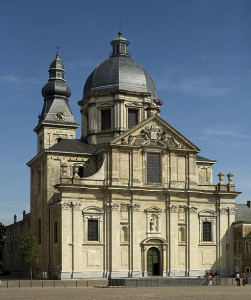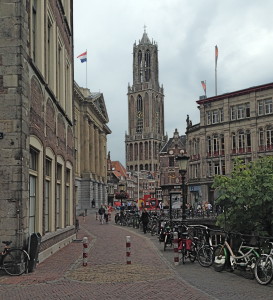I’m a 4th generation Oregonian; some of my family was in Oregon shortly after Oregon became a state. It’s an interesting challenge to grasp the concept of relocating back to Europe, where my ancestors emigrated from. After all, they left for a reason. It’s certainly ‘reasons,’ as there are dozens of reasons that have prompted us to pack the bags and to consider moving back.
After deciding to move to the Netherlands, I thought that the appropriate decision was to leave my brother with what family photos and genealogy I’ve kept through the years. As far as I knew dragons lived in Utrecht, so it seemed safer for the documents to remain in the US. It prompted me to scan and digitize all the important ones before delivering the large cardboard box full of old paper and photos. And of course it prompted me to consider doing a quick genealogy while I still had the information. Little did I know that it was the tip of an iceberg. What resulted was months of late nights in front of the computer, searching for connections and finding more than I knew was possible.
There had been a family story that our ancestors on my father’s side came to Great Britain with William the Conqueror; it turns out that it was true, and more. I should mention that one of four people in the US is related to royalty in some way, so the news isn’t the boost of self-aggrandizement that it seems. Its rather common. What is fascinating is the history lesson upon history lesson that you experience as you push back your research into the depths of centuries past.

Saint Peter’s Church, Ghent, Belgium where a distant ancestor, Arnulf I, Count of Flanders was buried in 865 B.C.
Image by PMRMaeyaert (Own work) [CC-BY-SA-3.0 (http://creativecommons.org/licenses/by-sa/3.0)], via Wikimedia Commons
A note about online genealogy sites. Be extremely careful not to create fantasy. You can build a family tree and connect yourself to anyone who’s ever lived if you want; it just may not be very true. To do it correctly is a painstaking process that does have rewards and disappointments. You will spend months of your free time. Work will suffer. In the end, though, if you’re diligent and lucky, you may get the best kind of history lessons, ones that involve the blood in your veins. The lessons have more meaning.
There are a number of gateway couples in the past; if your path leads to one of these, you are pretty much related to every king and queen before them, or at least to a lot of European nobility. I found three separate family lines going back to Normandy and William, all of which eventually lead back to Charlemagne and Charles Martel. The lines lead back before that, to the time when Europe wasn’t well defined, or at least defined quite differently. The paths lead back to the Goths, the Visigoths and Ostrogoths. Its a murky, bloody, and fabulous lesson upon lesson. It leads back beyond that.
There are ghosts everywhere here. Unlike the US, which is a large and relatively new place, Europe is a litany of one group pushing another out, again and again, with great loss of life. Some of the cities here are painful to walk in. Two world wars were not that long ago. Ghosts are everywhere, brushing against you as you bicycle next to the canal, or as you walk down a narrow sidewalk. I’m related to a House who ruled the Low Countries long before the current House of Orange, and my ghosts are here. They’re in France, in Normandy, and in Burgundy; they are in Italy, and in Ghent. They are in Great Britain, in Cornwall and Devon. In dozens of other cities and countries here.
Four generations in Oregon is rare, yes, but it is nothing when compared to the more distant past. Place is something that gets less defined the farther back in history you go.

